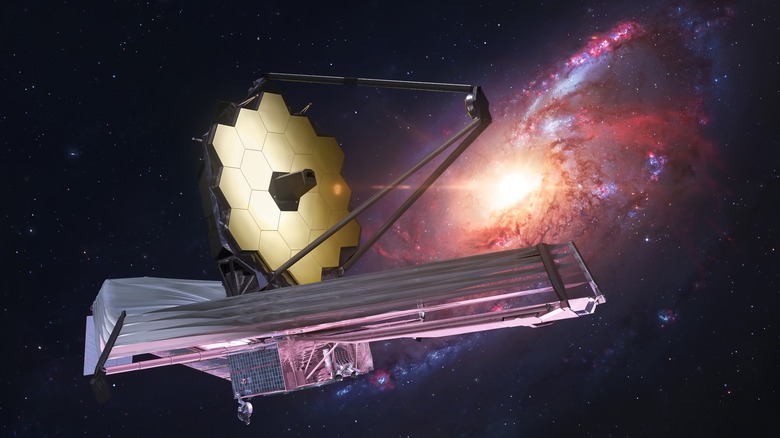How James Webb Telescope Will Study The Earliest Periods Of The Universe
The James Webb Space Telescope, the world's most powerful space telescope, is set to begin its science operations in summer 2022, and one of the topics that astronomers are most excited to study is the very early stages of the universe. One of the incredible things about astronomy is that it is possible to effectively look back in time. Because it takes time for light to travel to us, when we observe very distant objects like galaxies, we are seeing them as they were when the light from them set out. The further away we look, the earlier we see these objects.
As Webb is extremely powerful, it will be able to see very distant objects, meaning it can look back to certain periods which are close to the big bang that happened 13.8 billion years ago (via Webb Telescope). Webb will be able to see galaxies that existed as far back as the first few hundred million years after the big bang, giving us more insights into the very early universe than ever before (via NASA). "These galaxies existed during the first billion years in the history of the universe, which we have very little information about to date," said researcher Michael Maseda. "Webb will provide the first large sample that will give us the chance to understand them in detail."
What early galaxies are made of
One of Webb's science missions is called the Next Generation Deep Extragalactic Exploratory Public (NGDEEP) Survey and it will use one of Webb's spectroscopy instruments to gather information called spectra. Spectra are light split into different wavelengths, like when light hits a prism and is split into a rainbow, and can be used to tell the composition of far-off objects (via Webb Telescope).
Part of the research goal is to find out how many heavier elements, which astronomers refer to as metals, exist in these galaxies. That's because learning this is important for understanding how galaxies evolve over time. Right after the big bang, only hydrogen and helium were around. Then, when stars began to create heat through fusion, they created heavier elements. These heavier elements were thrown off by the stars when they died and were incorporated into the next generation of stars.
So older stars tend to be low in heavier elements, and younger stars tend to be richer in them. "One of the fundamental ways that we trace evolution across cosmic time is by the amount of metals that are in a galaxy," explained another of the researchers, Danielle Berg. With Webb's instruments, various science programs will work on the early universe to find out when the earliest galaxies formed, what they were composed of, and how massive they were.
